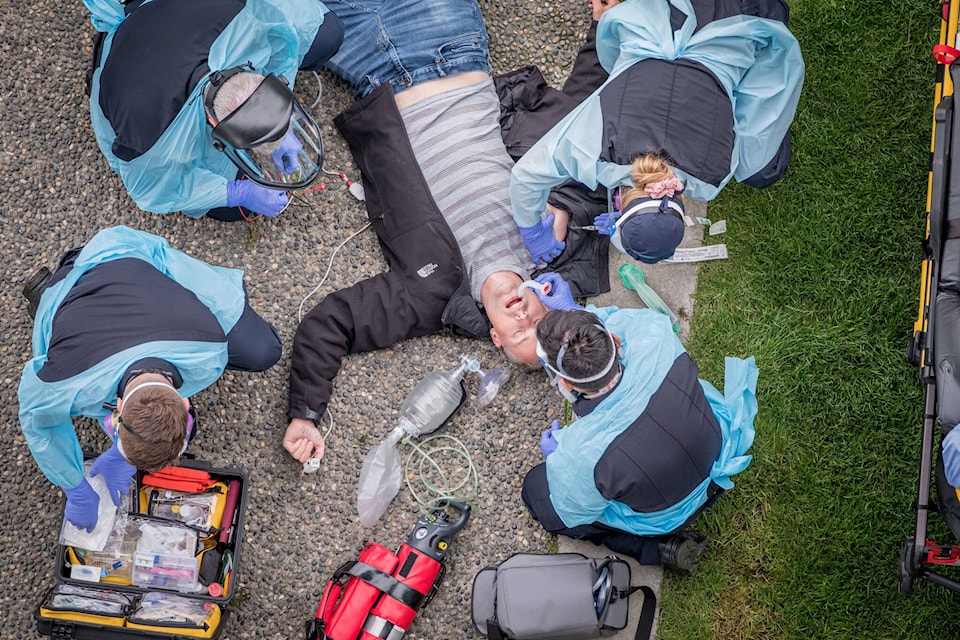For the third year in a row, Hope saw an uptick in overdose deaths.
Numbers released Feb. 9 by the BC Coroners Service put the local number at eight for 2021.That’s a small number, but in a community of Hope’s size, it is significant.
“The population of Hope and up the Fraser Canyon and surrounding area is just under 10,000 people, so one death here is equal to almost 80 deaths in Vancouver,” said Hope-based doctor Aseem Grover, who is the Site Medical Director at Fraser Canyon Hospital. “Absolutely things are getting worse.”
The report charts ‘illicit drug toxicity death rates’ per 100,000 person-years.
Hope’s death rate for 2021 is 90, which is among the highest in the entire province. Only Upper Skeena (175.7), Merritt (124.9), Enderby (102), Lillooet (98.6) and North Thompson (92.2) are higher.
Grover attributes much of that to two factors.
RELATED: Overdose Prevention Guide shares vital resources close to home
RELATED: Hope’s overdose callouts nearly double from 2020 to 2021
First, he said that while the Hope region has fewer people, they are spread out over a large and geographically challenging area. That makes it difficult to access potentially life-saving services.
“There’s not a lot of support from the provincial government for transportation,” Grover noted. “In rural communities like we have up the canyon, there’s a lack of being able to get to and from appointments. If there was better access to transportation to various services, there would be overall better care and access to the resources that are available.
“A lot of communities, especially Indigenous communities, have a lack of resources and they’re geographically isolated. That was only further heightened with the weather and other disasters we faced (in 2021).”
COVID is the other factor, going hand-in-hand with transportation and contributing to the isolation that the vulnerable population already feels.
The pandemic has seen a lot of services transition online, which can be a problem.
“They don’t always have the technology to thrive in a virtual environment,” Grover said. “Some people have limited minutes on their phone and may not be able to access wifi on a limited basis. There are a lot of technological challenges they face to have stable appointments. We can access some of the more stable people better remotely, but those who are most vulnerable and at risk to overdose rely on our face-to-face appointments.”
Hope’s death rate was 78.4 in 2020 and 56.5 in 2019.
In both years that was highest in B.C.
The 2021 death rate represents a 283 per cent increase over what it was five years ago. In 2016 the death rate was 23.5, which at the time was 21st among 76 local health authorities (LHAs).
Grover, who is on the front line of the opioid crisis, said a small and dedicated group of people in Hope are doing their very best “slowing things down,” and he’s not discouraged by these latest numbers.
“And there are a lot more programs that are going to be supporting what we’re doing,” he added. “The IHART team is a very robust program that will help with housing and facilitating treatment access across the region. There’s been a lot of debate in our community about whether we want to offer housing to our street-entrenched and vulnerable population. With everything BC Housing is doing to help support us, it’s shown that a lot of people, when provided the opportunity really do change their life around.
“Their vulnerability is reduced, they will focus on their health situation and their overdose risk is significantly less.”
Grover said each community is different and there are no easy answers, but there is a long-term solution to be found if groups come together.
“With community efforts, including assistance from the District (of Hope), from the FVRD (Fraser Valley Regional District), from health care professionals and the community at large, it will make a difference. Me just working out of the office, doing some outreach with a few teams, it’s not enough. I’m encouraged that it’s not worse than it is, but we’re a small team doing a boatload of work.
“If everyone came together with a purpose, it could make a massive difference.”
